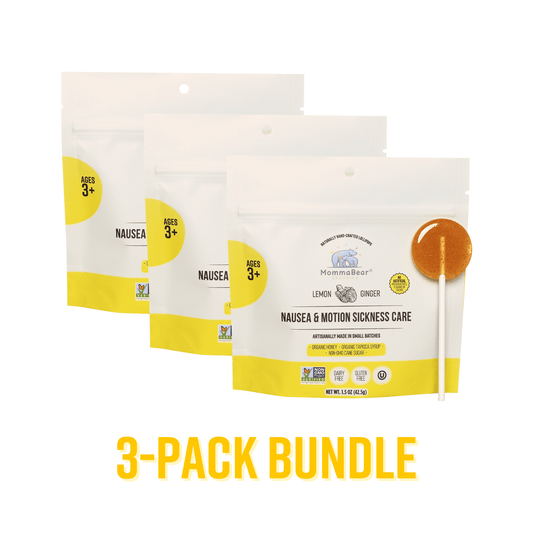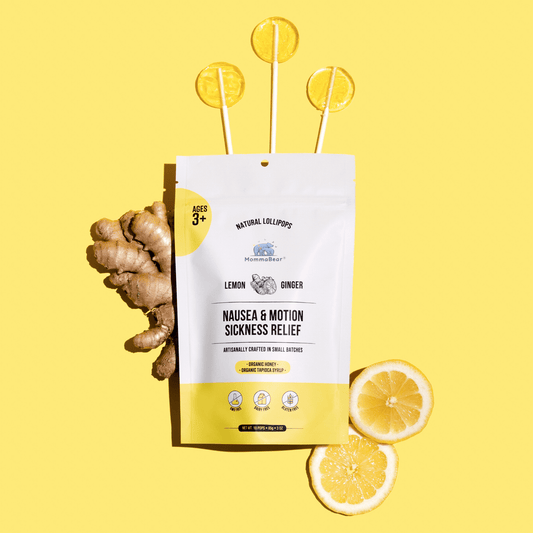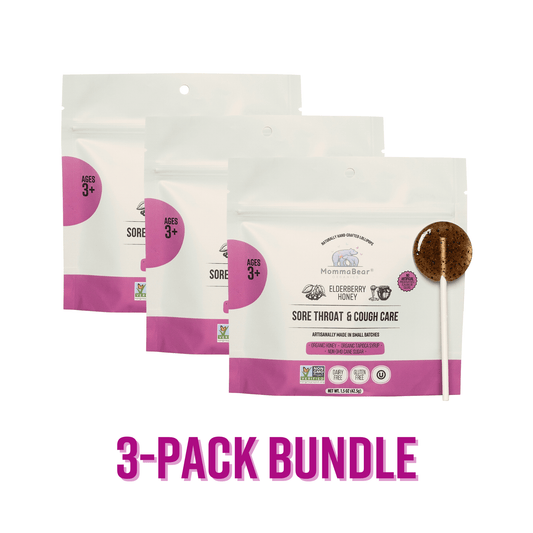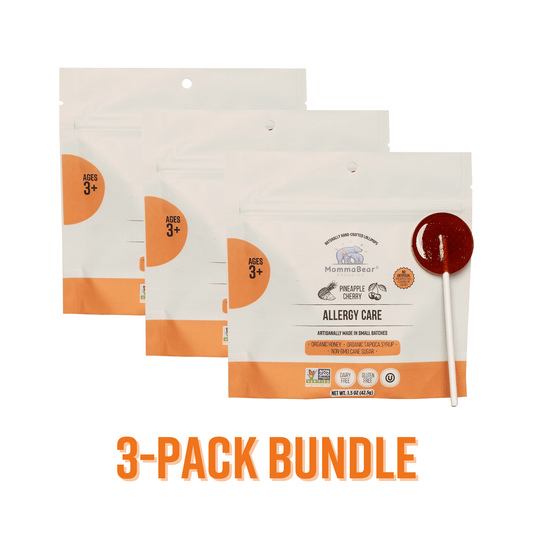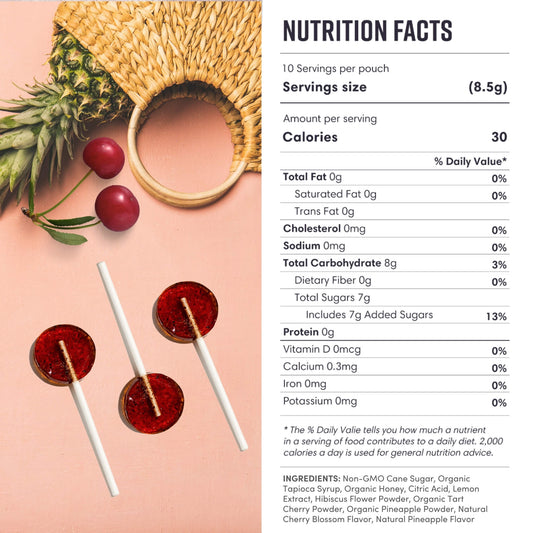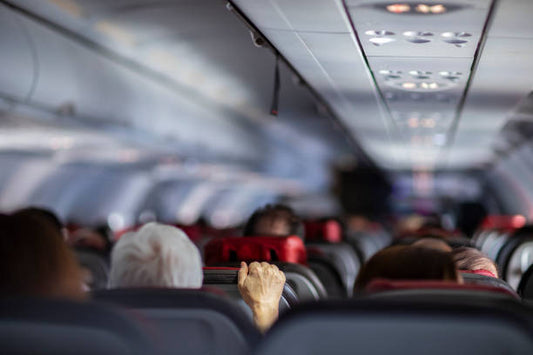Understanding Motion Sickness in Children
Motion sickness is a common condition experienced by many children when traveling by car, boat, or plane. It arises from a conflict between the sensory signals sent to the brain from the inner ear, eyes, and deeper body parts that contribute to balance. This conflict can cause discomfort and interruptions to the travel experience, often leading to parents seeking solutions to alleviate their child's symptoms.
Children aged 2 to 12 are particularly susceptible to motion sickness, as their bodies and balance systems are still developing. The condition can manifest in various ways and may cause distress not only to the child but also to the caregivers who are looking for effective ways to manage the situation. Understanding the nuances of this condition can help parents prepare for travel and minimize the chances of their child experiencing discomfort.
Causes of Motion Sickness in Kids
The primary cause of motion sickness stems from sensory mismatch. When a child is in a moving vehicle, their inner ears sense the motion while their eyes might perceive a stationary environment inside the car. This discord can cause symptoms ranging from nausea to dizziness. Factors that can worsen the experience include:
-
Exposure to strong odors, such as food or fumes.
-
Excessive screen time during travel, as focusing on screens can intensify the sensory conflict.
-
Anxiety or stress associated with travel.
-
The child's developmental stage and susceptibility, as some children may naturally be more prone to motion sickness.
Additionally, genetics can significantly influence whether a child is likely to experience motion sickness. If parents or siblings have a history of motion sickness, it might make it more probable for the child to encounter similar symptoms. Plus, engaging in certain activities, such as reading or playing games while in motion, can make this condition worse, since they encourage the child to focus on a stationary object even as their body is moving.
Symptoms to Look Out For
Identifying the symptoms of motion sickness early can help in managing the condition effectively. Common indicators include:
-
Nausea and vomiting.
-
Dizziness or lightheadedness.
-
Excessive salivation or a pale complexion.
-
Increased irritability or whining, especially in young children.
Recognizing these symptoms can empower parents to take immediate action and provide their children with relief, allowing for a more pleasant travel experience. In some cases, children may also exhibit behavioral signs such as restlessness or a sudden change in mood, which can serve as early warning signals. Being attentive to these cues can help caregivers intervene before the symptoms escalate, ensuring that the journey remains enjoyable for everyone involved.
Over-the-Counter Medicines for Motion Sickness
When symptoms of motion sickness arise, many parents turn to over-the-counter (OTC) medications as a first line of defense. While it’s essential to consult with a pediatrician before administering any medication, several OTC options are generally deemed safe for children.
Antihistamines for Motion Sickness
Among the most common OTC medications used for motion sickness in children are antihistamines. These drugs work by blocking the signals in the brain that cause nausea and vomiting. Some commonly recommended antihistamines include:
-
Dimenhydrinate (Dramamine): Effective for nausea and vomiting, and is suitable for children ages two and older.
-
Meclizine (Antivert): More appropriate for children older than 12 years, as its safety for younger children is not well established.
These medications can work wonders, but they might make some kids feel a bit sleepy. This could be a nice perk for long trips, but it’s not the best fit for every child. It’s important for parents to know that antihistamines can affect kids differently; some may feel the effects more strongly than others. To keep things comfortable and safe, it’s a good idea to begin with a lower dose. This way, you can see how your child responds before making any changes.
Non-Drowsy Options
Some children may require non-drowsy alternatives for motion sickness. Although fewer options exist, some medications offer relief without sedation:
-
Ginger supplements: Available in various forms, including candies and capsules, ginger is a natural remedy that has shown promise in alleviating nausea.
-
Specific brands of antihistamines are formulated to be non-drowsy, though parents should verify ingredients and consult with a healthcare provider.
It is crucial to monitor children’s reactions to medications and make adjustments as necessary, ensuring that both safety and comfort are prioritized during travel. In addition to pharmacological options, behavioral strategies can also play a significant role in managing motion sickness. Techniques such as encouraging children to focus on the horizon, ensuring adequate ventilation in the vehicle, and taking regular breaks can help mitigate symptoms. Furthermore, some parents find that engaging children in light conversation or activities, such as listening to music or audiobooks, can distract them from feelings of nausea and enhance their overall travel experience.
Prescription Medicines for Severe Cases
In more severe instances of motion sickness where OTC options have proved ineffective, consult a healthcare professional for prescription medications. These can have more potent effects but require careful consideration and monitoring. It's important to discuss any underlying health conditions or medications currently being taken, as interactions can occur. A healthcare provider can tailor the treatment plan to the individual’s needs, ensuring both safety and effectiveness in managing symptoms.
Scopolamine Patches
Scopolamine patches are a popular prescription option for preventing motion sickness. These patches release medication absorbed through the skin and are typically placed behind the ear. They work well for extended travel periods and are suitable for children aged 10 and older. Side effects can include dry mouth, drowsiness, or blurred vision, so close observation is needed. Additionally, it’s advisable to apply the patch at least 4 hours before travel to allow the medication to take effect, and it can remain in place for up to three days, making it a convenient choice for longer journeys.
Promethazine
Promethazine is another prescription option that can help children manage severe motion sickness symptoms. This antihistamine works by blocking the brain signals related to nausea. It is essential for parents to note that promethazine can also cause significant drowsiness, so it should be used carefully and ideally under medical supervision. Furthermore, promethazine can be administered in various forms, including tablets, syrup, or suppositories, providing flexibility depending on the child's needs and preferences. Parents should also monitor for any unusual reactions, especially when starting the medication, as some children may experience heightened sensitivity to its sedative effects.
Natural Remedies and Alternatives
Some families prefer to explore natural remedies as alternatives to traditional medicines. These approaches may work well for mild cases and can be more appealing to some parents due to their holistic nature. The growing interest in natural health solutions reflects a broader trend towards integrative medicine, where families seek to combine conventional treatments with natural options to achieve optimal health outcomes.
Ginger-Based Remedies
Ginger has long been celebrated for its anti-nausea effects and is available in many forms including:
-
Ginger ale or ginger tea, which can be soothing and palatable for children.
-
Ginger candies, provide a sweet alternative that can mask the taste.
-
Ginger capsules for older children who can swallow pills or tablets.
These remedies give parents the chance to use natural ingredients to effectively ease their children's motion sickness. Plus, ginger is packed with antioxidants and has wonderful anti-inflammatory properties, making it a fantastic addition to a child's diet that goes beyond just helping with nausea. Many families even love to add fresh ginger to their meals or smoothies, not only introducing their kids to its delightful flavor but also allowing them to enjoy its health benefits!
Acupressure Bands
Acupressure bands are lovely little tools worn around the wrist that gently apply pressure to specific points which many believe can help ease nausea. Many parents find these non-invasive devices to be a wonderful choice since they don’t involve any medication and can easily be used alongside other treatments. Plus, these bands are usually adjustable, ensuring a comfortable fit that can be perfectly tailored to your child's needs – especially important for young ones who might be sensitive to tightness!
It’s important for caregivers to ensure that the bands fit comfortably and to monitor their child’s response to their use. Some parents report that their children find the bands reassuring, as they can wear them discreetly and feel empowered to manage their symptoms independently. Furthermore, the use of acupressure is rooted in traditional Chinese medicine, which adds an element of cultural richness to the practice, making it a fascinating topic for families interested in exploring various health traditions.
Tips for Administering Medicine to Children
Administering medication to children can sometimes be challenging. Here are a few strategies to consider that can help make the process smoother.
Dosage Guidelines
When it comes to medications for motion sickness, following proper dosage guidelines is crucial. Always adhere to the recommendations provided by a healthcare professional or the medication packaging. Dosage should be based on the child's age and weight, as incorrect dosing can potentially lead to ineffective treatment or adverse side effects.
It is also beneficial to keep a medication chart for your child, which notes the doses administered along with the times, to keep track of when the next dose is due. This chart can also serve as a visual aid, allowing your child to see their progress and understand the importance of adhering to their medication schedule. Involving them in this process can foster a sense of responsibility and encourage compliance.
Making Medicine Palatable for Kids
Many children are resistant to taking medicine due to its taste or form. Here are a few tips to improve the experience:
-
Mixing liquid medications with a small amount of juice or apple sauce may help mask the taste.
-
Offering rewards or using a positive reinforcement system can motivate children to take their medicine.
-
Explore options for chewable or dissolvable tablets that may be easier for children to take.
Being patient and understanding a child’s hesitance to take medication can promote a more positive experience and ensure they receive the treatment they need. Additionally, creating a routine around medication time can help children feel more at ease. For instance, establishing a specific time each day for medication can make it a predictable part of their daily schedule. You might also consider incorporating a fun ritual, such as reading a short story or singing a song, to distract them during the process. This can transform what might be a stressful moment into a bonding experience, making it easier for both the parent and child.
Furthermore, engaging in open conversations about the importance of medication can help demystify the process for children. Explaining how the medicine works in a way they can understand, perhaps by using analogies or simple language, can empower them and reduce anxiety. Children often respond positively when they feel informed and included in their own care, which can lead to better cooperation and a more pleasant experience overall.
Conclusion
Managing motion sickness in children can present challenges for parents, but understanding the available options plays a key role in tackling the issue effectively. By exploring over-the-counter and prescription medications, as well as natural remedies, families can discover safe options that work for their children. Ensuring that the right dosages are administered in a way that is palatable can enhance compliance and overall comfort during travel.
When looking for reliable solutions and products to support your child's needs, consider checking out MommaBear Organics. We offer a range of trusted health and wellness options that can help your family enjoy their journeys together. By being well-informed and prepared, you can help your children embrace travel with joy and excitement, creating wonderful memories along the way!


